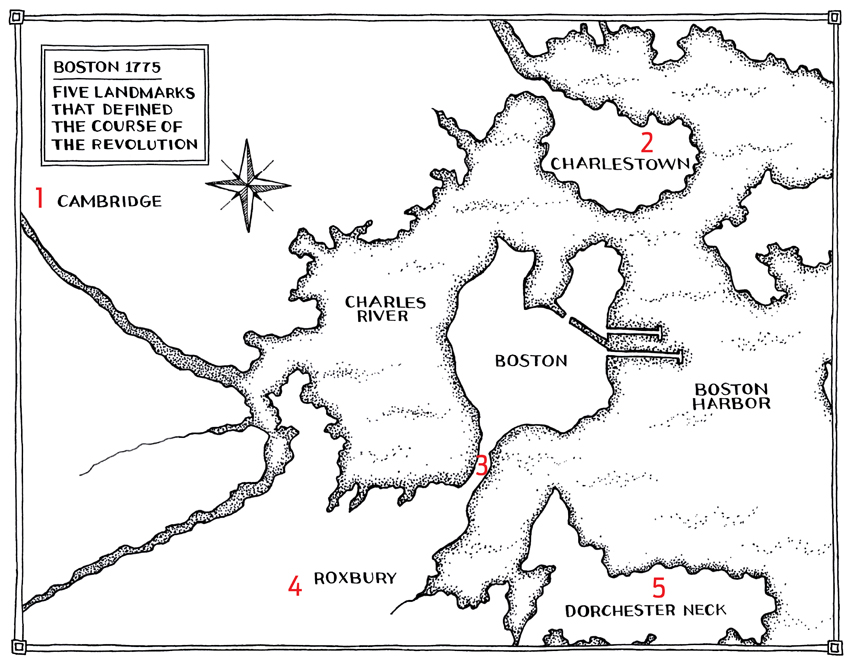Battleground: Nathaniel Philbrick’s Bunker Hill
When the bestselling author Nathaniel Philbrick set out to describe Revolutionary Boston for his new book, Bunker Hill, his first task was learning what the city looked like. “It was a challenge,” he says. Back then, there was no East Boston, no Back Bay, and no Southie. And for the patriots, that was a good thing. As Philbrick notes, and the map below shows, the peculiar geography of 18th-century Boston played a crucial role in how the American Revolution unfolded.

1. Cambridge › In 1775, when General George Washington took command of his army in Cambridge, the town was, according to Philbrick, “quite bucolic.” Unlike today, Cambridge was difficult to get to from Boston (and, without the current landfill, more distant), which helped reduce the threat of a British raid. “It was far enough away that it would take some time to attack it,” Philbrick says.
2. Breed’s Hill › The British tried to bust out of Boston through Charlestown, but discovered patriots entrenched on Breed’s Hill (where the Battle of Bunker Hill was actually fought). “It took [the British] three charges, because they got so blasted away by the patriots,” Philbrick says. The British took the battle, but the locals took the momentum.
3. Boston Neck › When the British army arrived, Boston “became a city under British-army occupation,” Philbrick says. “After Lexington and Concord, all the patriots left and began a siege.” The neck, he says, “was the only way in and out,” and provided a useful chokepoint for the patriots.
4. Roxbury Heights › The patriots built forts and stationed soldiers all along the Roxbury high grounds, giving them an advantage over the British. “Those heights kept them bottled up in Boston, so if the British tried to launch a sortie across the neck, the Americans up in Roxbury were in a position to let ’em have it,” Philbrick says.
5. Dorchester Heights › When the guns of Ticonderoga were installed atop Dorchester Heights on March 4, 1776, they held a commanding position over the British fleet in Boston Harbor. As a result, on March 17, the British evacuated the city. Today, though, South Boston would have gotten in the way.


